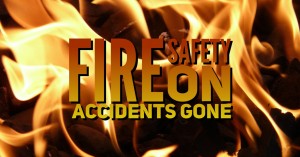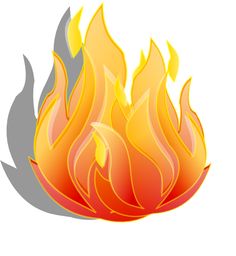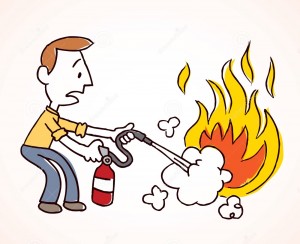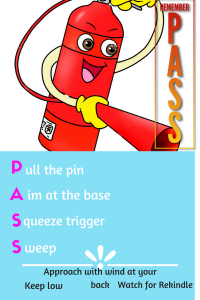 A fire can happen at any time! And it’s your job as a homeowner to have a plan when, not if, a fire starts. There are a few things you need to know about fires and how to properly extinguish them before you can create a successful fire safety plan. Lets get right into it.
A fire can happen at any time! And it’s your job as a homeowner to have a plan when, not if, a fire starts. There are a few things you need to know about fires and how to properly extinguish them before you can create a successful fire safety plan. Lets get right into it.
In order to extinguish a fire, you first must know that fires are a result when oxygen,heat,fuel and a chemical reaction come into contact. Take away any one of these four elements to stop fire in its tracks.
First thing you need to know, all fires are not the same. Different fuels create different fires and require different types of fire extinguishing agents.
If you’ve taken our “Fire Safety on, Accidents Gone” quiz, this’ll be review. What? You haven’t taken it yet, here go ahead and see how you well your knowledge is with fire safety by clicking this link. “Enter link to quiz” Don’t worry, we’ll wait here for you.
There are five classes of fires, A,B,C,D,K.
 •Class A fires are fires caused by ordinary combustibles such as wood, paper, cloth, trash, and plastics.
•Class A fires are fires caused by ordinary combustibles such as wood, paper, cloth, trash, and plastics.
•Class B fires are from flammable liquids such as gasoline, petroleum oil and paint. Class B fires also include flammable gases such as propane and butane.
•Class C fires are fires involving electrical equipment such as motors, transformers, and appliances.
•Class D fires are fires in combustible metals such as potassium, sodium, aluminum, and magnesium
•Class K fires are fires in cooking oils and greases, such as animal and vegetable fats
Now each fire Type calls for a special type of fire extinguisher agent. Some agents can be used on multiple types of fires, while some agents can actually worsen the fire.
- Water and Foam-Water extinguishers are for Class A fires only. Using this fire extinguish agent can be dangerous and worsen damage! Water and Foam fire extinguishers extinguish the fire by taking away the heat element of the fire triangle. Foam agents also separate the oxygen element from the other elements.
- Carbon Dioxide- Carbon dioxide can be used on Class B & C fires. Carbon Dioxide fire extinguishers extinguish fire by taking away the oxygen element of the fire triangle.
- Multipurpose Dry Chemical- Multipurpose Dry Chemical fire extinguishers are the most widely used type of fire extinguisher. It is effective on Class A, B, and C fires.
This agent works by creating a barrier between the oxygen element and the fuel element. - Wet chemical- Class K extinguishers were developed for modern, high efficiency deep fat fryers in commercial cooking operations. Some may also be used on Class A fires in commercial kitchens. Wet Chemical is a new agent that extinguishes the fire by removing the heat of the fire triangle and prevents re-ignition by creating a barrier between the oxygen and fuel elements.
- Clean Agents- These extinguishers are primarily for Class B & C fires. Clean Agent extinguishers include the halon agents as well as the newer and less ozone depleting halocarbon agents. They extinguish the fire by interrupting the chemical reaction of the fire triangle.
- Dry Powder-dry powder extinguishers are for Class D or combustible metal fires, only. They are ineffective on all other classes of fires. Dry Powder extinguishers are similar to dry chemical extinguishers, except that they extinguish the fire by separating the fuel from the oxygen element or by removing the heat element of the fire triangle.
Did You Know…
Using the incorrect agent can allow the fire to re-ignite after apparently being extinguished succesfully.
Ideally, fire extinguishers should be placed on every floor. The kitchen, however, is a must location for fire extinguishers. Fires are much more likely to start in the kitchen, where dangerous greases can easily catch aflame. You can purchase a home fire extinguisher for anywhere between $30.00-100.00.
With fire safety on, accidents are gone! Don’t let your family or home go another day without a fire safety plan. Check out our helpful infographic below to know how to properly use a fire extinguisher.
Know that you know all about fire extinguishers, don’t forget to check out our quiz to test your skills!




















Leave A Comment